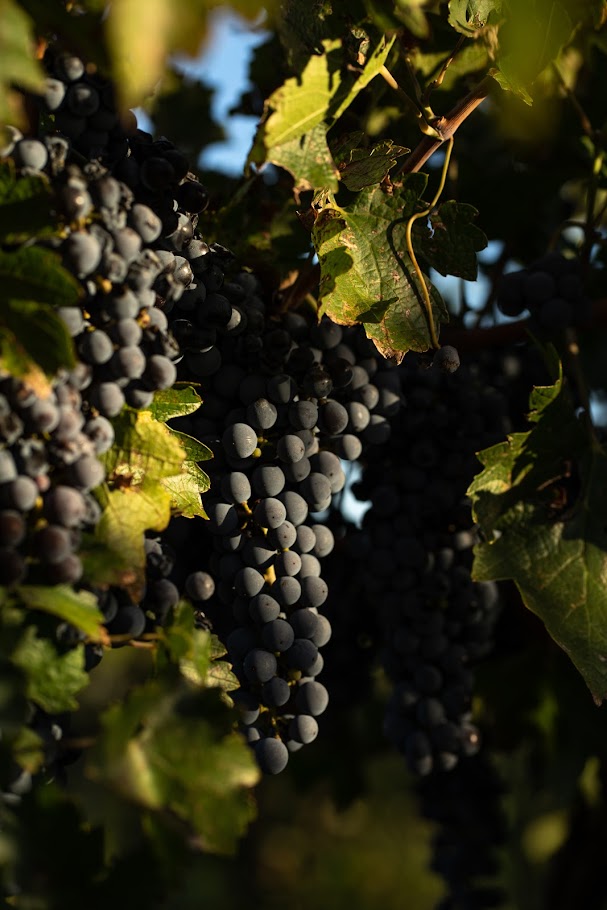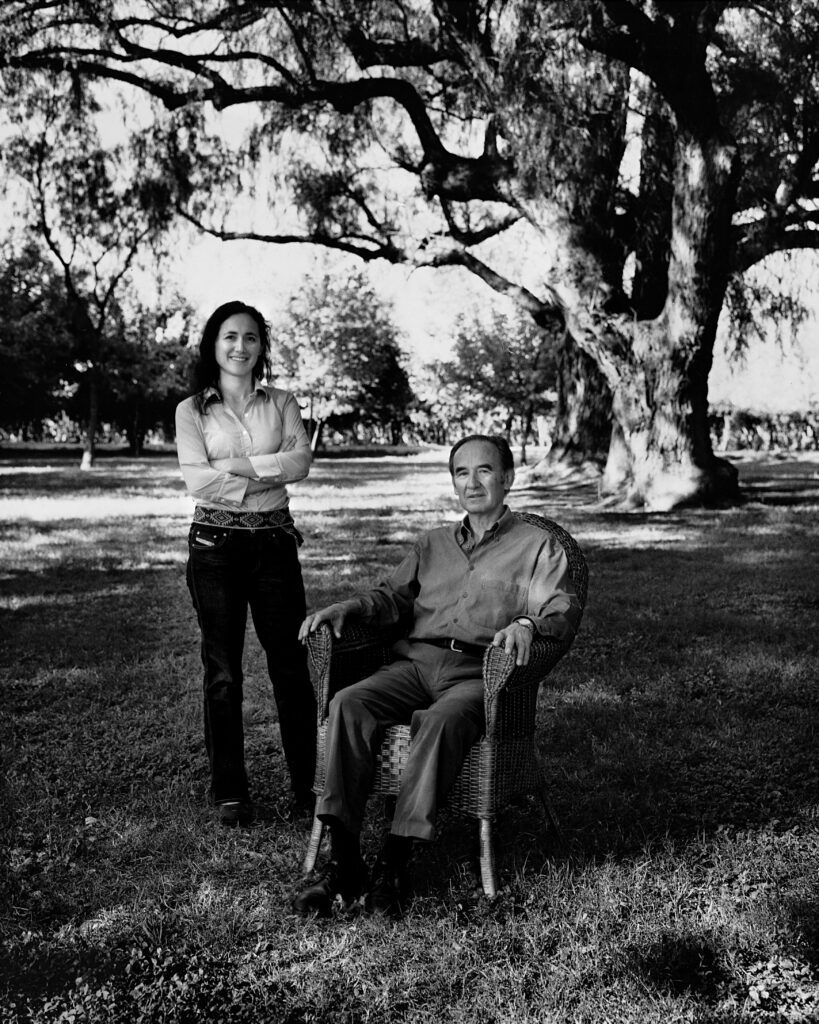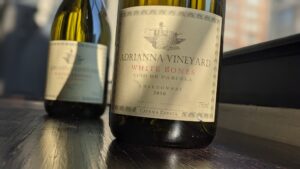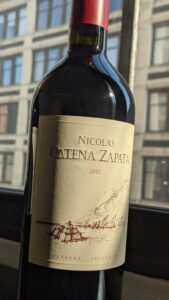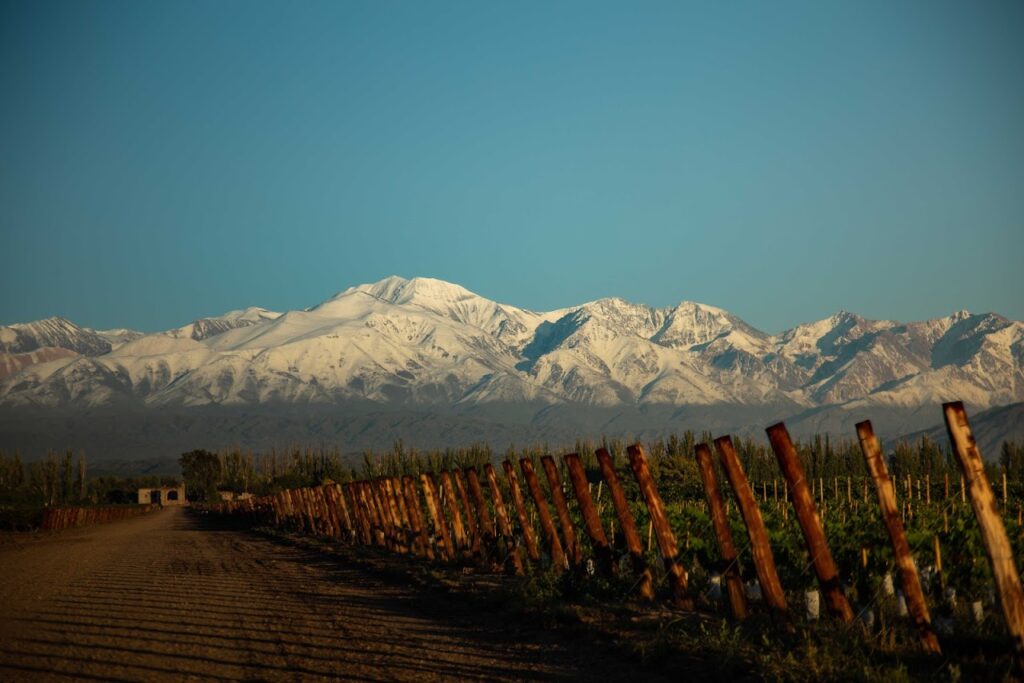
Photo Credit: Catena Zapata
A sweet young woman walked side by side with her father, a man who had been her hero from as far back as she could remember, in vineyards that sat at almost 5,000 feet in elevation among the foothills of the Andes Mountains in Argentina. As the cold weather sent a chill up her spine while the sun beating down brought warmth to her face, she looked around at the land that would one day be considered one of the greatest vineyards in Argentina and one of the most intensely studied vineyards in the world. The lovely nature of this young woman made her the favorite among everyone in her family and so it was decided that this vineyard would be named after her, Adrianna, and this special piece of land would eventually become part of the realization of her father’s dream: showing the world that Argentina could make some of the greatest wines in the world.
Nicolás Catena Zapata was walking with his daughter that day and he would eventually be considered a giant in the world of wine but it wasn’t without an uphill fight as although his family winery, Bodega Catena Zapata, had been around since the late 1890s and he was already considered a living legend in Argentina, there were many in the established fine wine world who did not take their wines seriously. And as his youngest daughter, Adrianna, would be the inspiration for one of their greatest vineyards, his oldest daughter, Laura, would join him to run Catena Zapata and not only carved a path in the fine wine world but take the idea of sense of place, a.k.a. terroir, as well as the concept of ‘grand cru’ sites to another level of research and discussion.
Changing the World
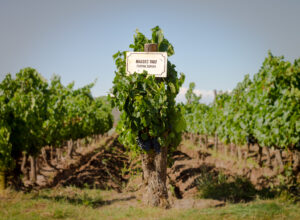
Photo Credit: Catena Zapata
As Adrianna was walking in the vineyards with her father, her older sister Laura was getting her medical degree in the U.S. to which she would follow by completing a residency in a California hospital. Today, when Laura is introduced as Dr. Laura Catena, her title not only represents her dedication to education and research but also many years as a part-time emergency doctor as she balanced going back and forth to and from California and Argentina, raising her children and running one of the most respected family wineries in the world. But initially that was not supposed to happen – while she was back in university she wanted to save the world and she thought there was no better occupation to accomplish such a mission than to devote her life to medicine.
Despite looking up to her father, Laura had a desire to find her own path in the world and a woman following her own path was considered a revolution within itself as an Argentine woman in the 1990s. She became well-acquainted with the U.S. when her father Nicolás Catena Zapata spent some time as a visiting scholar of economics at the University of California, Berkeley, in the early 1980s, while Laura finished high school in California. It was a good time to take a break from living in Argentina as there was political and economic instability as well as Laura being given the chance to learn to speak English fluently, as well as eventually French, and along the way she found her way into medicine. But Nicolás needed his daughter at various times in her young adulthood to help him speak to great châteaux owners in Bordeaux, as he always admired the top wine regions of France, as well as help her father at events such as the New York Wine Experience but she was deeply bothered by the patronizing comments her father received in the 1990s that were compounded by seeing everyone fight to talk to the French and Italian producers at wine events while paying very little attention to her father even though he was considered a king in Argentina. So she found a way to balance bringing not only her family’s name to international wine conversations of fine wine but also showing the world the potential of Argentina as a winemaking country.
Research and Championing
When Laura officially joined her father to help run Bodega Catena Zapata in 1995, she also started the Catena Institute that same year as many things about vineyards and winemaking were based more on anecdotal information instead of facts from reliable research. One of the things that was eventually disproved was a statement from her father’s vineyard manager that said that grapes such as Malbec and Cabernet Sauvignon would never ripen at high-altitude elevations like in the Adrianna Vineyard. And so Laura, with experts she had hired in varying scientific fields, went on a mission to study every aspect of the Catena vineyards and vines and followed it through to the winemaking process and final wine product. Recently the Catena Institute released a report that shows a positive sense of place being expressed in some of their top sites with the Malbec variety as she argues that the idea of terroir, or a ‘grand cru’ vineyard, should not just be associated with such legendary places as Bordeaux and Burgundy but that some of the high-altitude vineyards in Argentina, which the Catena family has been at the forefront of growing grape vines at extraordinarily high elevations, should also be considered as sites that produce distinct, complex wines that have the structure and acidity for long-term aging.
Laura’s medical background instilled in her the importance of research and data that she could use to back her claims of having high quality vineyards and also the research provides them with data that helps Bodega Catena Zapata to make the right choices along the way of vineyard management and wine cellar techniques. But when she is asked about setting up ‘grand cru’ designations for Argentina, Laura is quick to say that she doesn’t think that such a notion is a good idea at this time. First, she believes that there is still a lot to learn about climate change and the ramifications of sites that are considered top quality at this time, as they may not be considered top quality in the future, and there is also the problem of politics with allowing the most powerful wine producers in Argentina to pick the sites as they may base their choices on their own personal best interests instead of what is in the best interest of displaying the greatest vineyards of Argentina; ideally she would like it to be independently chosen designations by qualified people but at this time she doesn’t know if such a thing is possible.
Chipping Away Stereotypes
But when it comes to the potential of the fine wines of Argentina, Laura has no doubt that after over 25 years of research and winemaking “that certain terroirs in Argentina can make wines of elegance and character, wines that have the structure, acidity and complexity to age for several decades and perhaps even a century.” And still, to this day, she is constantly meeting with wine buyers, sommeliers and wine educators to openly discuss their own experiences with talking about the great wines of Argentina that are not officially designated compared to the officially designated ‘grand cru’ wines such as those in Bordeaux and Burgundy. Some find that a wine that has the classification of ‘grand cru’ on the label is an easy one for wine drinkers to immediately grasp as being a fine wine but, fortunately, as time goes on, more and more wine consumers are open to learning more about high quality wines from Argentina as well as other places outside of historically celebrated wine regions; although sometimes chipping away at stereotypes can be a long process that is not for the faint of heart.
Laura’s own mission of showing the potential of wines from Argentina started with her frustrations with how her father was not receiving the respect that he deserved and certainly things have changed as today he is listed among the great men who were true visionaries and advocates for their wine regions such as Robert Mondavi for Napa Valley and Angelo Gaja for Barolo and Barbaresco. Yet one could make an argument that Laura is just as deserving of such a title, although her grandfather could never imagine having a woman, let alone a granddaughter, be the visionary to take the wines of Argentina to the next level.
After 25 years of balancing a life of living in California and Argentina, raising children and working part-time as an emergency room doctor while taking on the responsibility of creating a world marketplace for Argentina wines, she is still bringing wine professionals and scientific experts together to have complex conversations as to how wines from Argentina are viewed across the globe. She wants to hear the issues that she needs to address as she is laser focused on striving to always make sure that Argentinian wines are a valid part of the conversation and that their wines always over-deliver. Through time, Laura has realized that it was important for her to save the world where she grew up and that meant that she needed to be a part of improving the vineyards, winemaking practices and becoming a voice for a country so that children in Argentina could grow up in the vineyards like she did; making it possible for grape growers and wine producers to have a future and today she couldn’t be happier to continue to work side by side with her father to keep the wine industry in Argentina alive.
And even though Laura had retired from being a doctor, she still volunteered to help vaccinate many homeless people in San Francisco as that side of her will always be there. And this pandemic has had so many ups and downs that have included constant shutdowns and various mutations of the Covid virus that it has been difficult to avoid moments of hopelessness for many; hence why people like Laura, who jump into action to chip away at a crisis, are vital. She understands that every small step forward has to be seen as a victory to keep propelling a people forward as it is a never-ending journey in her mind to continuously evolve with the times to produce honest high-quality wines. And just as she was leading a recent discussion of the concept of ‘grand cru’ vineyards, a famous Master Sommelier used the term ‘parcela’ – a term used in Argentina to talk about great vineyard plots that express distinctive qualities – and her face immediately lit up as she knew that another big victory was won when it came to receiving the respect that the wines of Argentina so rightfully deserve.
2018 Catena Zapata, Adrianna Vineyard ‘White Stones’ Chardonnay: 100% Chardonnay from the Adrianna Vineyard in the Gualtallary in the southwest wine region of Valle de Uco in Mendoza located over 4,800 feet in elevation. A real intense minerality and hence the name, with notes of wet stones and limestone minerality that had rich lemon custard and juicy white peach flavors on the palate.
2018 Catena Zapata, Adrianna Vineyard ‘White Bones’ Chardonnay: 100% Chardonnay from the ‘White Bones’ plot which is right next to the ‘White Stones’ plot in the Adrianna Vineyard and the differences in these wines really shows diversity of place. There is a distinctive herbal character that cannot be compared to any other herbaceous wine and it gives it a more aromatic quality as well as the wine being more linear on the palate with an intense energy that finishes with citrus peel, white flowers and more of a crumbly limestone. Laura said they are still studying where this herbal note comes from in this plot.
2017 Catena Zapata Adrianna Vineyard ‘Fortuna Terrae’ Malbec: 100% Malbec from their ‘Fortuna Terrae’ plot in the Adrianna Vineyard located at around 4,480 feet. This wine is an ideal specimen for displaying the potential elegance of Malbec when grown under certain conditions. Pristine blueberry fruit with a mixture of violets and spices on the nose with complex flavors of forest floor and black fruit on the palate that was knitted together with fine tannins.
2017 Nicolás Catena Zapata: 59% Cabernet Sauvignon, 33% Malbec and 8% Cabernet Franc from the Adrianna, Nicasia and La Pirámide Vineyards. Laura expressed that this wine was very dear to her heart as it was named after her father as he has always loved Cabernet and Malbec blends. Layers of an array of black fruits on the nose such as cherries, black raspberries and blackberries with notes of dark chocolate and flakes of sea salt, gravelly soil and lush cassis on the palate with bright acidity and structured tannins that had a long, flavorful finish.

